Driving Tajikistan’s Pamir Highway, the world’s second-highest road
Central Asia’s greatest road trip, along the Pamir Highway, is a test of faith.
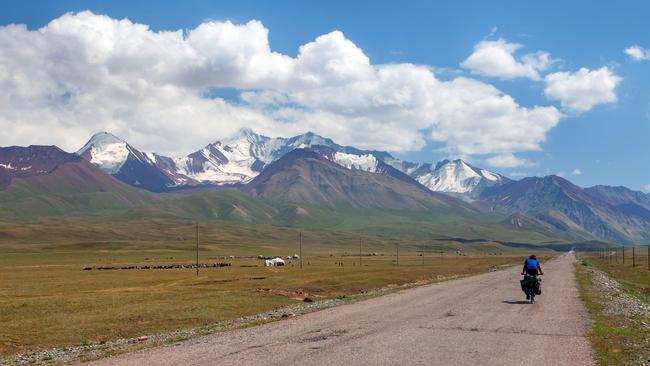
The M41 unfurls from Dushanbe as a civilised ribbon of asphalt. By the time it cuts into Kyrgyzstan 1100km later, it has gone feral; throwing off its tarmac and cuddling up to Afghanistan, killing trucks then galloping away from their twisted metal carcasses. Where it soars into high-altitude desert, it drip-feeds images of fire-blackened skulls and sun-baked plains into your hypoxic dreams. It has morphed from a mundane route into something fantastical, into Central Asia’s greatest road trip — the Pamir Highway.
A satisfying road trip isn’t just a car journey. It is a test of faith; it is trusting in serendipity as much as suspension. That’s getting harder to find in Central Asia. Kyrgyzstan is so risk-free that mainstream tour companies go there. Uzbekistan is enjoying a boost from a visa waiver a year ago.
Tajikistan, on the other hand, remains an old-fashioned, where-the-hell-is-that-stan. It lies on one of the world’s most poorly buried fault lines, a scar that slices across civilisations and occasionally itches with resentments. It is where the Iranian Middle East meets the Orient meets the Russian north. Before it became one of the “stans”, shires of the former Soviet Union, it fell within the Persian empire then the 10th-century Samanid empire that stretched from the gulf to Pakistan and China.
In June, tour operator Explore runs its first trip along the Pamir Highway: 1255km, 19 days, plus the bragging rights of cruising at 4655m along the world’s second-highest road (the Karakoram Highway through Ladakh pips it). It tracks the mother lode of all road trips, the Silk Road.
I join the first reconnaissance trip last year. On paper it sounds like a journey spicy with exoticism and the potential for hazard. I hear the call of adventure. I just hope it won’t be a wrong number.
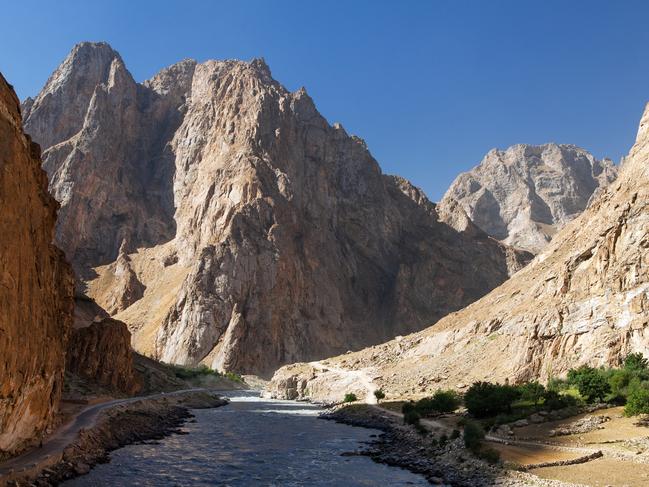
I start in Dushanbe. Painted in the grim-cheer pastels beloved by Soviet states and sanatoriums, the Tajikistan capital is a city in search of an identity. Elderly Tajiks feel communism’s loss like an amputated limb. They still ache for it. Since independence in 1991, the President, Emomali Rahmon, has been nation-building. In a country ranked below Somalia in GDP, he has erected the world’s biggest tea house, the Navruz Palace. The size of five football pitches, it’s constructed from semi-precious stones, Siberian cedar and self-justification. Rahmon’s National Library is Central Asia’s largest, his 165m-tall flagpole was the world’s highest until the Saudis went 5m better in 2014. His $365m presidential palace makes Downing Street look like a garden shed. Rahmon has also legislated on the maximum size of weddings (150 people) and the age at which men can grow beards (40). That smells of Soviet control-freakery until you learn the aim is to encourage financial prudence and secular Islam. Anyway, Tajiks could have been lumbered with worse. Last April, the Turkmenistan President released a rap song about his horse. Tajiks themselves are incredibly friendly, incidentally. They touch their hearts when they greet you.
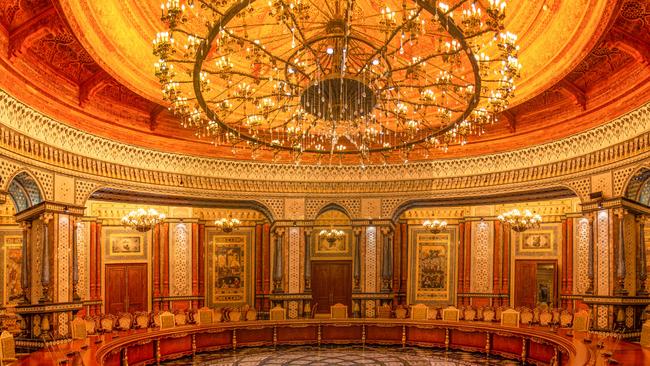
My guide, Shaboz, and I load up our 4WD Toyota and hit the highway. In truth, the first 160km are a disappointment. The scenery is flat. A 10th-century citadel undergoing reconstruction in Hulbuk is diverting, but it’s a long way to come to watch brickies while a local archeologist interprets hummocks of earth.
Then, an hour from Khorog, we grind up a potholed dirt road, grin our passage through a police checkpoint into autonomous Gorno-Badakhshan province, and I feel a sharp pain as my jaw hits the floor. No purple prose, no photo prepares you for the Panj River valley. It rises in dirt-brown walls of rock. Snow-ribbed peaks plug the ends. It’s too muscular a landscape to be beautiful. It isn’t welcoming or generous. It’s sweary. It looks like it has a temper as savage as the river itself. Alongside it twists the Pamir Highway, skittering over scree and ducking under cliffs that occasionally lob car-sized boulders on to traffic.
I spend the first two days looking not up, but across the river to Afghanistan. On our side, troop patrols shoulder Kalashnikovs, and Chinese trucks plume dust. On the other, carpets dry on riverbanks below mud villages and turbaned blokes tap-tap donkeys through acid-green fields. It’s a divide between centuries as much as countries.
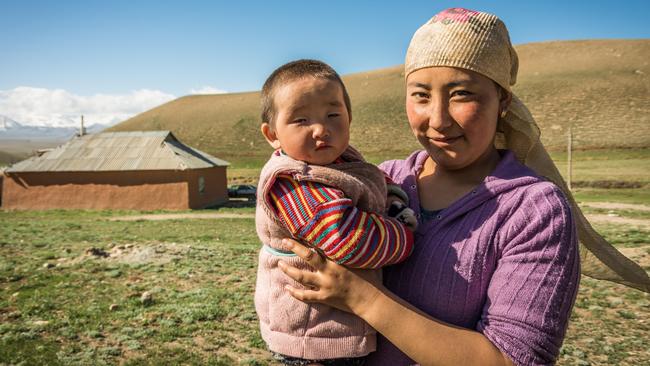
Shaboz can’t see it. The “stans” are artificial constructs, he says; a Russian ploy to divide and rule. About 12 million ethnic Tajiks now live in Afghanistan, a quarter more than in Tajikistan itself. “It is just a border. They’re the same people on both sides of the river.”
Just 250,000 people live in Pamir province, even though it accounts for 45 per cent of Tajikistan’s area. They speak an ancient dialect of Farsi and many have the brilliant blue eyes of mountain skies (one yarn places them as descendants from Alexander the Great’s army). The men wear the regulation sweatpants and T-shirts. The women, though, are magnificent, as bright as tropical birds in emerald, ruby and turquoise headscarves and shalwar kameez.
Many are Ismailis, an aristocratic Muslim caste scattered by Genghis Khan in the 13th century. They distrust Dushanbe and look instead to their spiritual leader, the Aga Khan. Yet before Ismailism, before Islam even, Pamiris were Zoroastrians. They worshipped fire, fed their dead to vultures and, wrote Pliny the Elder, discovered magic.
Beyond Pamiri capital Khorog, we track the Panj through villages, oases of poplars and willows among bone-dry mountains, where patient families with small bundles wait for a lift.
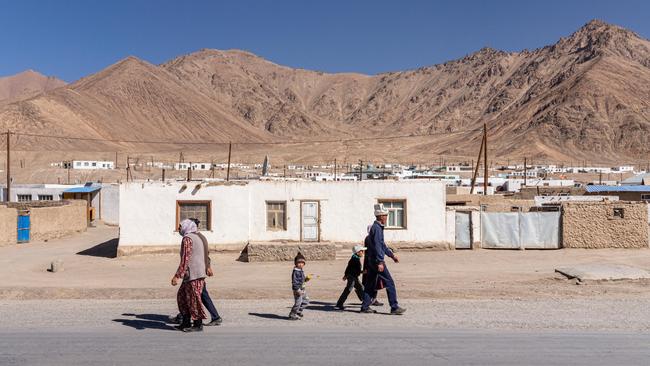
Roadside shrines appear, on each sits the bleached skull of a Marco Polo sheep, giant beasts of the high mountains with huge horns. We enter one shrine outside Ishkoshim. Its altar is stacked with sheep skulls and blackened by ceremonial fires. When the wind creaks in the rafters you can hear the old gods whisper.
That night, in a homestay in Hisor village, owner Davlatkhan sits us down in a room skimmed by rugs to induce migraines, and dishes up greasy rice and bread. “When we provide hospitality, we please God and become closer to God,” he says. But which god, I wonder?
Although Pamiris say the columns of their traditional houses represent prophets of Islam, they originally personified angels of the old religion. Above us is a skylight framed by four concentric squares, embodiments of the Zoroastrianism elements: air, earth, fire and water.
In the Wakhan Valley the next day, that strikes me as entirely rational. In the 1890s this was the 350km buffer zone between Imperial Russia and Britain. Now you could wade across the Panj to Afghanistan before you knew you’d got wet.
Across the river, a man rides sidesaddle on a donkey at the head of a camel-train; six shaggy black Bactrians loaded with poplar trunks. Behind them glitter peaks of the Hindu Kush. It’s like a Victorian Academy painting of Marco Polo’s Asia, a scene as ancient as the Silk Road itself. I watch the procession head east towards China, a swaying dot in a vast desert. Of course, people here were Zoroastrian. In so elemental a landscape, who wouldn’t be?
Our route heads northeast, grinding uphill past shepherds cradling lambs, past mangled cars like memento mori, to cross the Khargush Pass at 4344m. Beyond is the Bam-i-Dunya, “the roof of the world”.
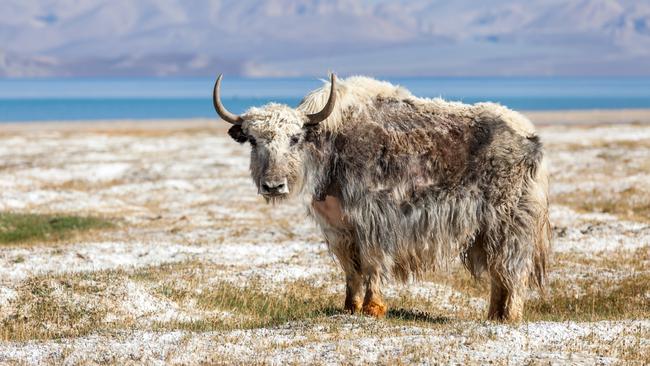
The Pamir plateau is a desert of horizon-shoving scale. Its air is so clear that gauging distance would be tricky even if your head wasn’t fuzzed by oxygen-starvation. You’re fried by day and frozen at night. Marco Polo took 12 days to cross it and grumbled the whole way. There were no birds, he wrote. His campfire threw no heat. Fair call; temperatures can drop below minus 60C.
No one can live up here, you think, then you slip between peaks to see yaks grazing beside a kingfisher-blue lake and earth-brick houses hunkered down against the weather. Bulunkul village has electricity, a well, a shop selling rice and biscuits, and a makeshift air, as if the occupants, former nomads, might jack it all in at any moment.
We don’t feel the cold, teacher Bakhten insists. We’re cross-legged on a platform in her living room, lunching on noodle soup and yak yoghurt. Kids attend school whatever the temperature: “Minus 30 degrees, minus 50, no problem. Anyway, the yaks like the cold.”
She sees me eyeing a wolf pelt on one wall, a snarling brute. “We caught him in a trap. Wolves are a problem in winter.”
The highway tracks northeast towards sharp-planed mountains where snow leopards prowl. At Murghab, a cold-bitten town with a bazaar made from shipping containers, it swings north over Ak Baital Pass (4655m).
What’s on the highest road of the former Soviet Union? A Kyrgyz woman in an embroidered tunic walking to God-knows-where and broken Russian telegraph poles stretching to infinity across a land that’s impossible to tame. When we stop for a photo, it’s so silent I hear my heartbeat.
More than 100km further, we reach the border. A soldier stamps my passport. “Tajikistan is finished,” he says. My journey or his country, I wonder. Either way, he’s wrong.
I’m following the highway through Kyrgyzstan to Osh. It looks domesticated after the Pamir Mountains, its smooth tarmac as exotic as Switzerland. As for Tajikistan, for latter-day Marco Polos, its story has just begun.
James Stewart was a guest of Explore.
TELEGRAPH MEDIA GROUP
IN THE KNOW
Explore’s 19-day Along the Pamir Highway tour, for a maximum 16 people, costs from $8160 a person, twin-share, excluding flights. Accommodation ranges from hotels to basic homestays and yurts. The journey starts in Dushanbe and ends in Almaty. The June 27 departure is sold out but there are places available on a September 5 departure plus June 26, August 11 and September 18 next year.

To join the conversation, please log in. Don't have an account? Register
Join the conversation, you are commenting as Logout